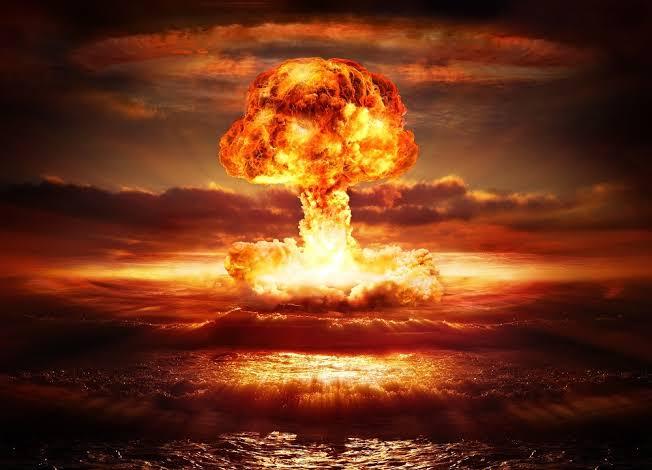Global Nuclear Stockpiles Revealed by New SIPRI Data
According to a new report from the Stockholm International Peace Research Institute (SIPRI), nine countries currently possess nuclear arsenals, with Russia and the United States retaining the majority of the world’s warheads. The data, current as of January 2025, reveals an alarming global capacity for nuclear destruction, highlighting long-standing geopolitical tensions and emerging risks.
Top Nuclear Powers and Their Warhead Estimates
The leading holders of nuclear weapons remain Russia and the United States, both of which hold thousands of military warheads. SIPRI estimates the distributions to be as follows:
- Russia: 4,309 warheads
- United States: 3,700 warheads
- China: 600 warheads
- France: 290 warheads
- United Kingdom: 225 warheads
- India: 180 warheads
- Pakistan: 170 warheads
- Israel: 90 warheads
- North Korea: 50 warheads
These figures reflect not just a legacy of Cold War-era stockpiling, but also ongoing military strategies and national security policies.
The Original Five Nuclear States
The United States, Russia (formerly the Soviet Union), China, France, and the United Kingdom are recognized by the United Nations as the first five nuclear-armed nations. These countries are also members of the Nuclear Non-Proliferation Treaty (NPT), which came into effect in 1970.
The treaty’s dual purpose is to prevent the spread of nuclear weapons and to promote peaceful nuclear energy. It also obligates signatories to engage in good-faith negotiation toward nuclear disarmament. As reported by the Associated Press, these nations have committed “to pursue negotiations in good faith” aimed at limiting their nuclear arms ambitions.
Expanding Nuclear Arsenals in Asia
China has rapidly expanded its nuclear capabilities in recent years, now holding an estimated 600 warheads. This growth reflects shifting power dynamics in the Asia-Pacific region, particularly amid tensions with the United States over Taiwan and maritime claims in the South China Sea.
India and Pakistan also maintain sizable nuclear arsenals, with 180 and 170 warheads respectively. Both countries are not signatories of the NPT and have a history of military skirmishes and unresolved border disputes, especially in Kashmir.
Israel and North Korea: Nuclear Ambiguity and Isolation
Israel maintains a policy of deliberate ambiguity regarding its nuclear program, neither confirming nor denying possession. Nevertheless, SIPRI and other defense analysts estimate its arsenal at around 90 warheads.
North Korea, with approximately 50 warheads, remains an outlier due to its withdrawal from the NPT and ongoing weapons development in defiance of international sanctions. Its advancing capabilities continue to provoke concern from South Korea, Japan, and the broader global community.
Controversy Around Iran’s Nuclear Ambitions
Although Iran is not listed among the nuclear-armed states, geopolitical scrutiny remains high over its nuclear program. International concerns were heightened due to its significant uranium enrichment activity, reaching 60% purity—close to weapons-grade levels (90%). However, U.S. intelligence reports suggest that Tehran is not currently pursuing atomic bomb development.
Iran maintains that its nuclear efforts are for peaceful purposes, a claim that has been met with both skepticism and cautious monitoring. The issue remains a critical flashpoint in the Middle East, especially amid ongoing tensions with Israel.
Implications for Global Security
The persistent existence, and in some regions, the expansion of nuclear arsenals underscore the fragility of global disarmament efforts. Experts argue that transparency, diplomatic engagement, and modernized arms control frameworks are critical in preventing an arms race or potential catastrophe.
“The continued possession of thousands of nuclear weapons by a handful of states, and the modernization of these arsenals, is deeply concerning,” said an unnamed spokesperson from SIPRI. “The risk of miscalculations or accidental launches remains high unless international conventions are strengthened.”
Global Non-Proliferation Efforts and the Road Ahead
Beyond the NPT, several bilateral and regional agreements aim to curb nuclear weapons spread. However, in an increasingly multipolar world marked by rising nationalism and regional hostilities, the effectiveness of such treaties is challenged.
Advocates for nuclear disarmament continue to push for global consensus and transparency regarding nuclear capabilities. Yet, as the latest data reveals, the path toward a world without nuclear weapons remains long and uncertain.
As geopolitical tensions evolve, especially in hotspots like South Asia, East Asia, and the Middle East, understanding which nations hold nuclear weapons—and how many—is crucial for global policymakers, defense analysts, and citizens alike.

